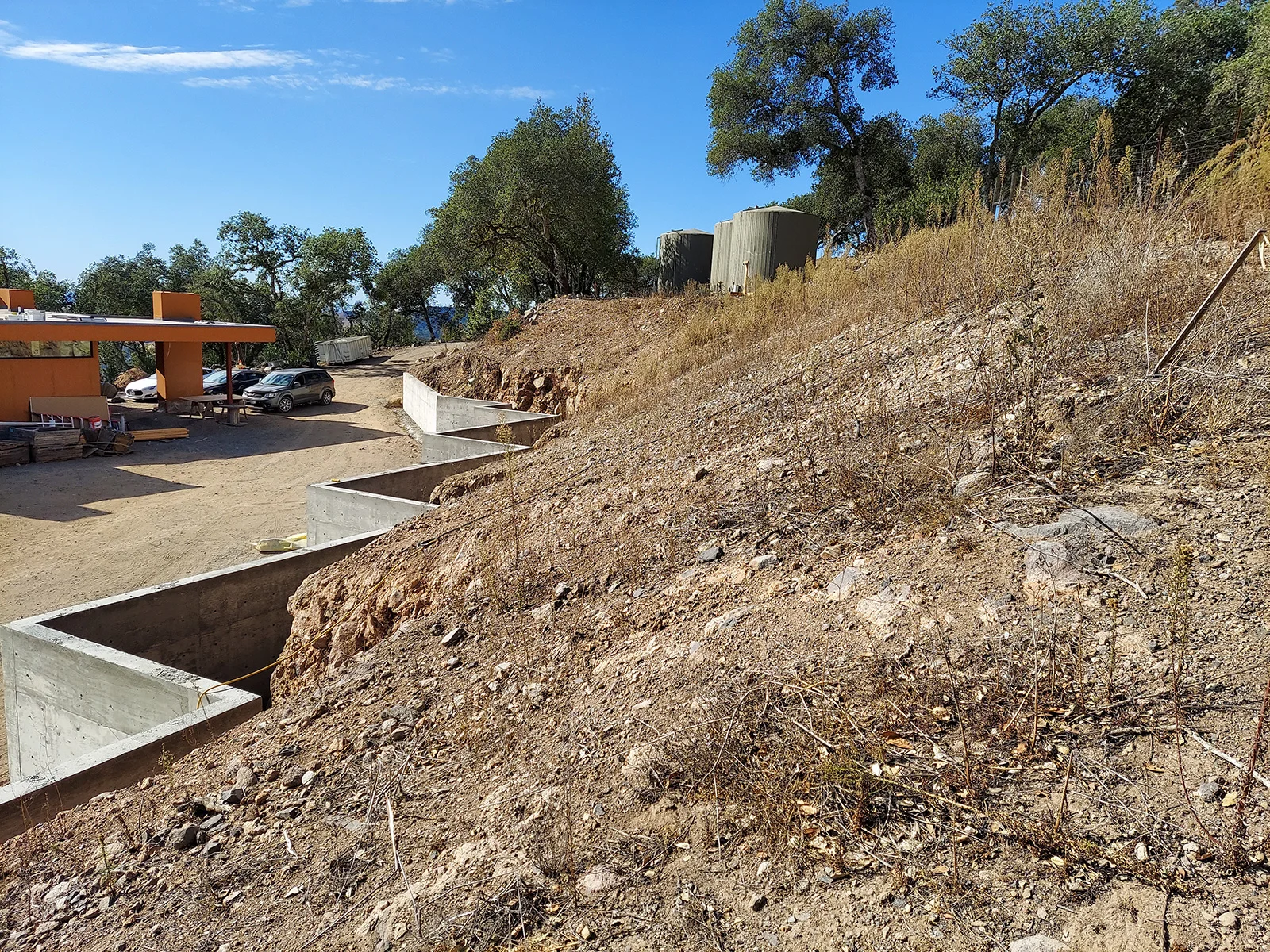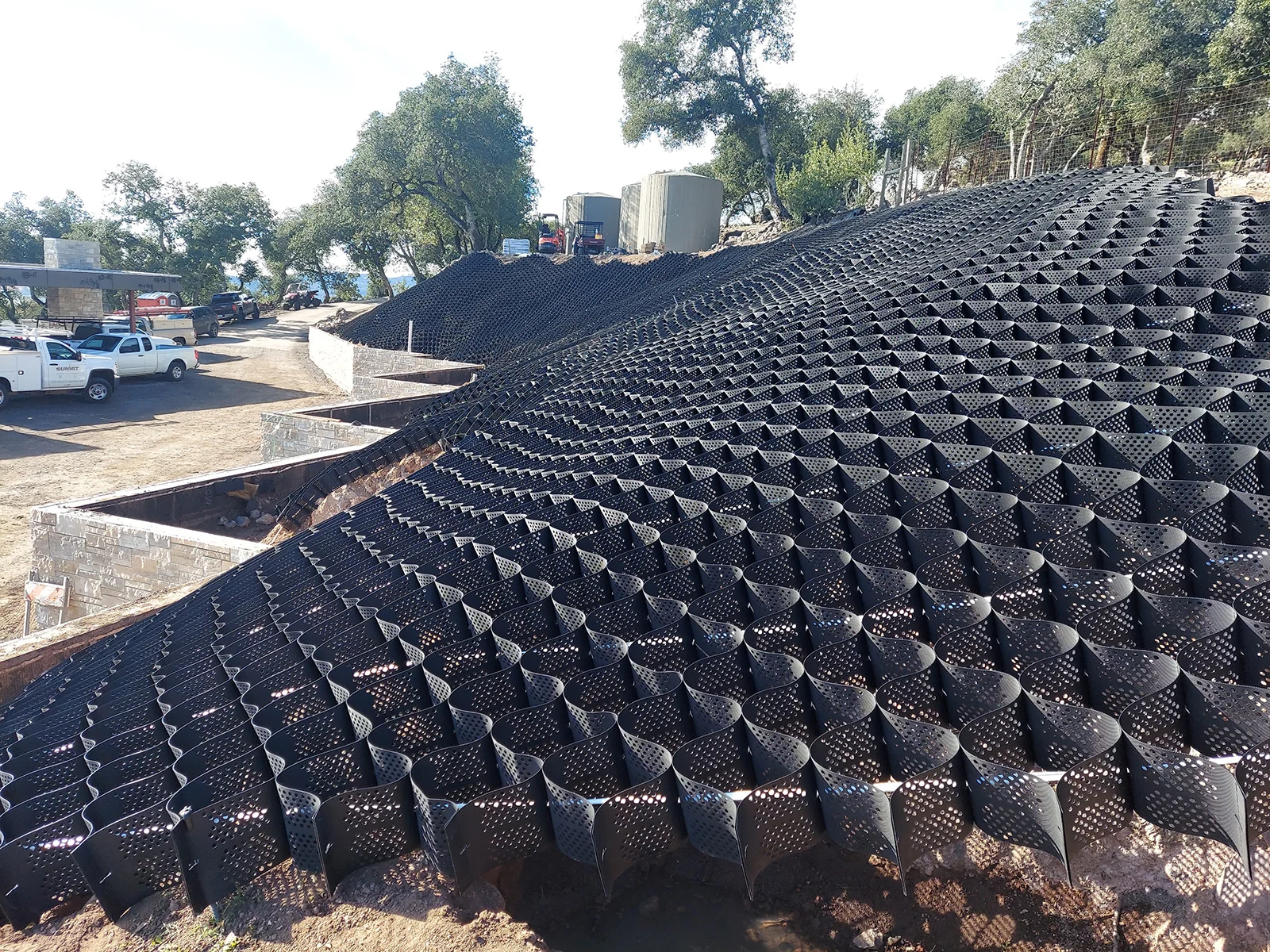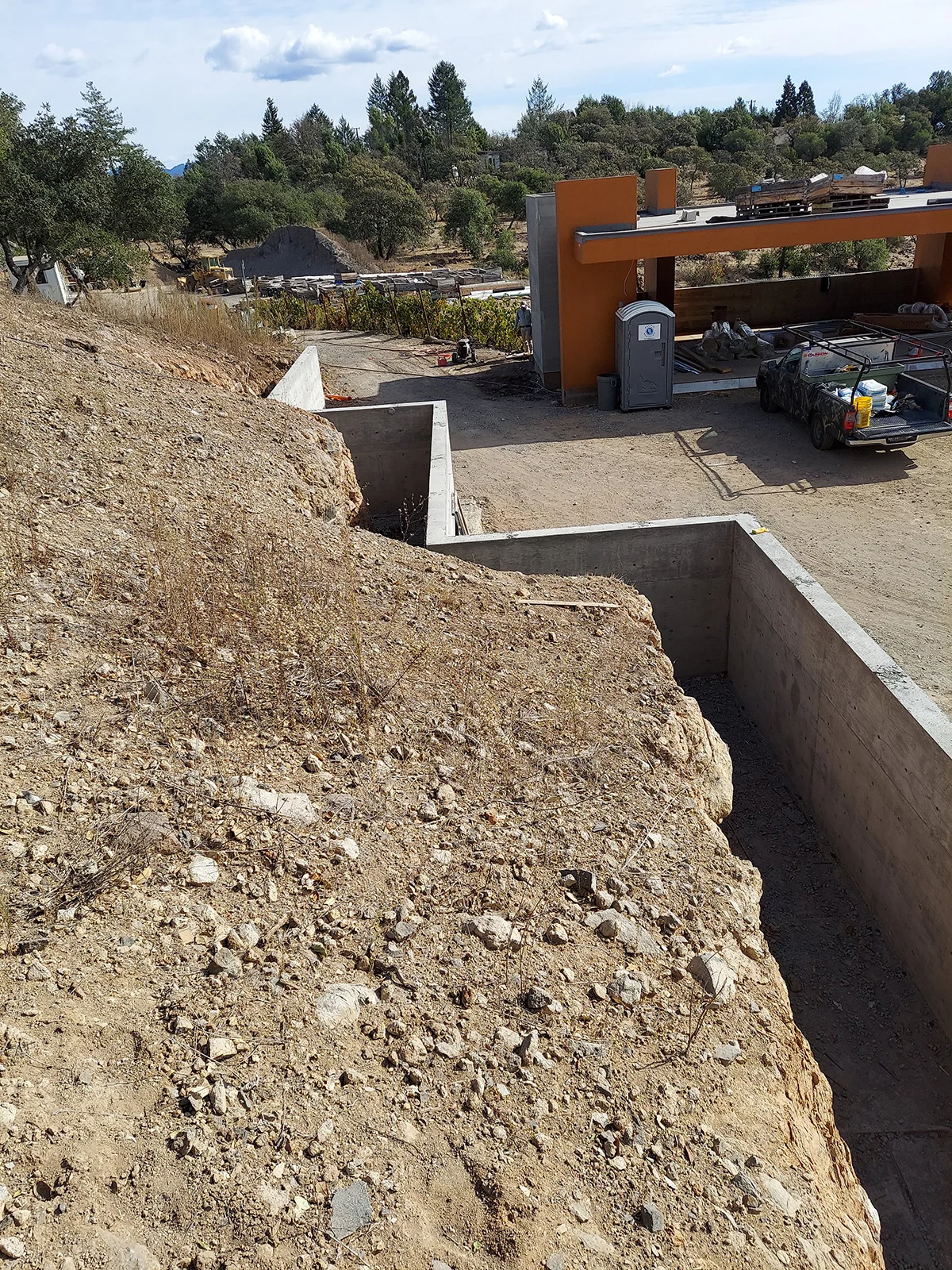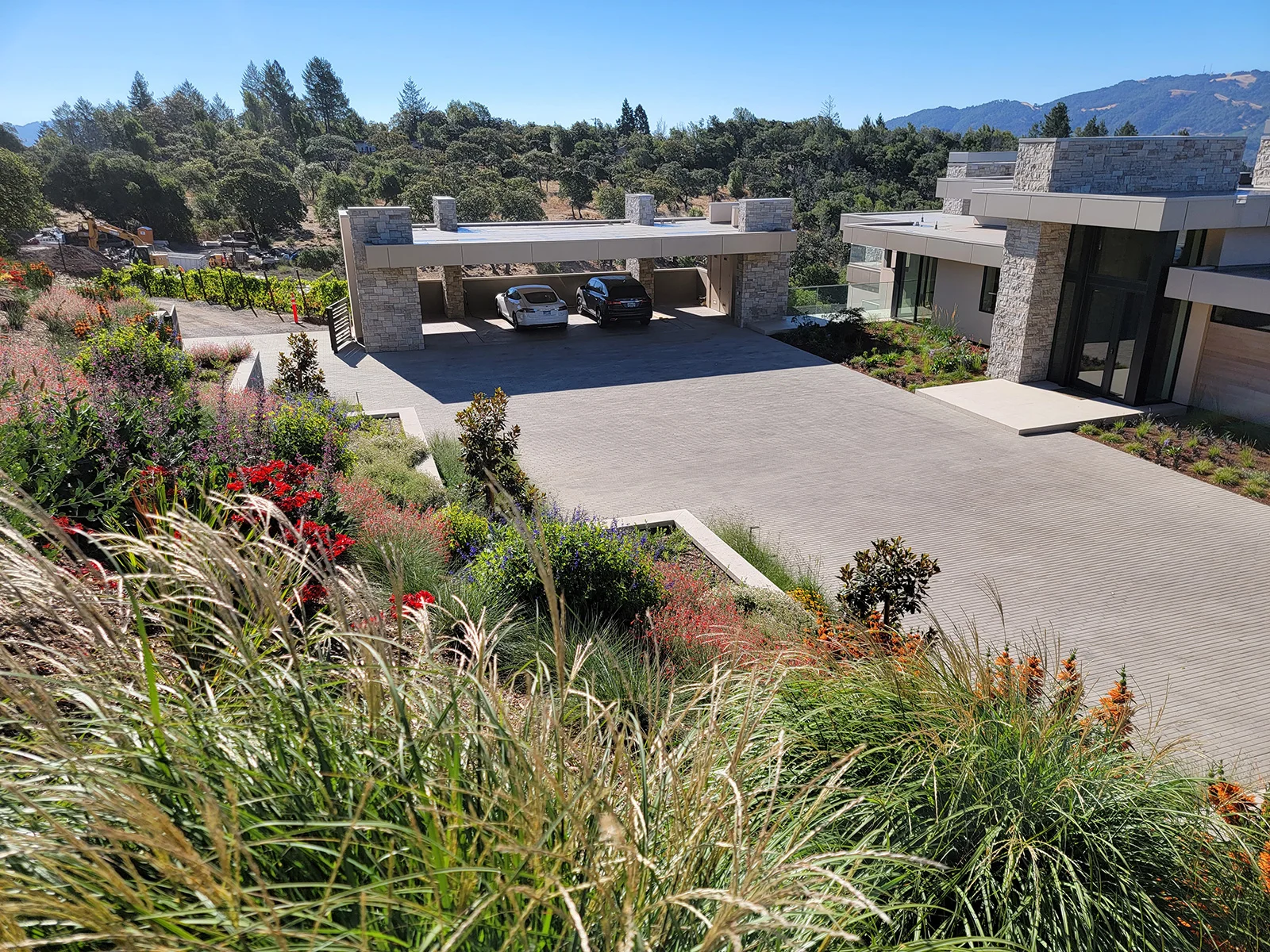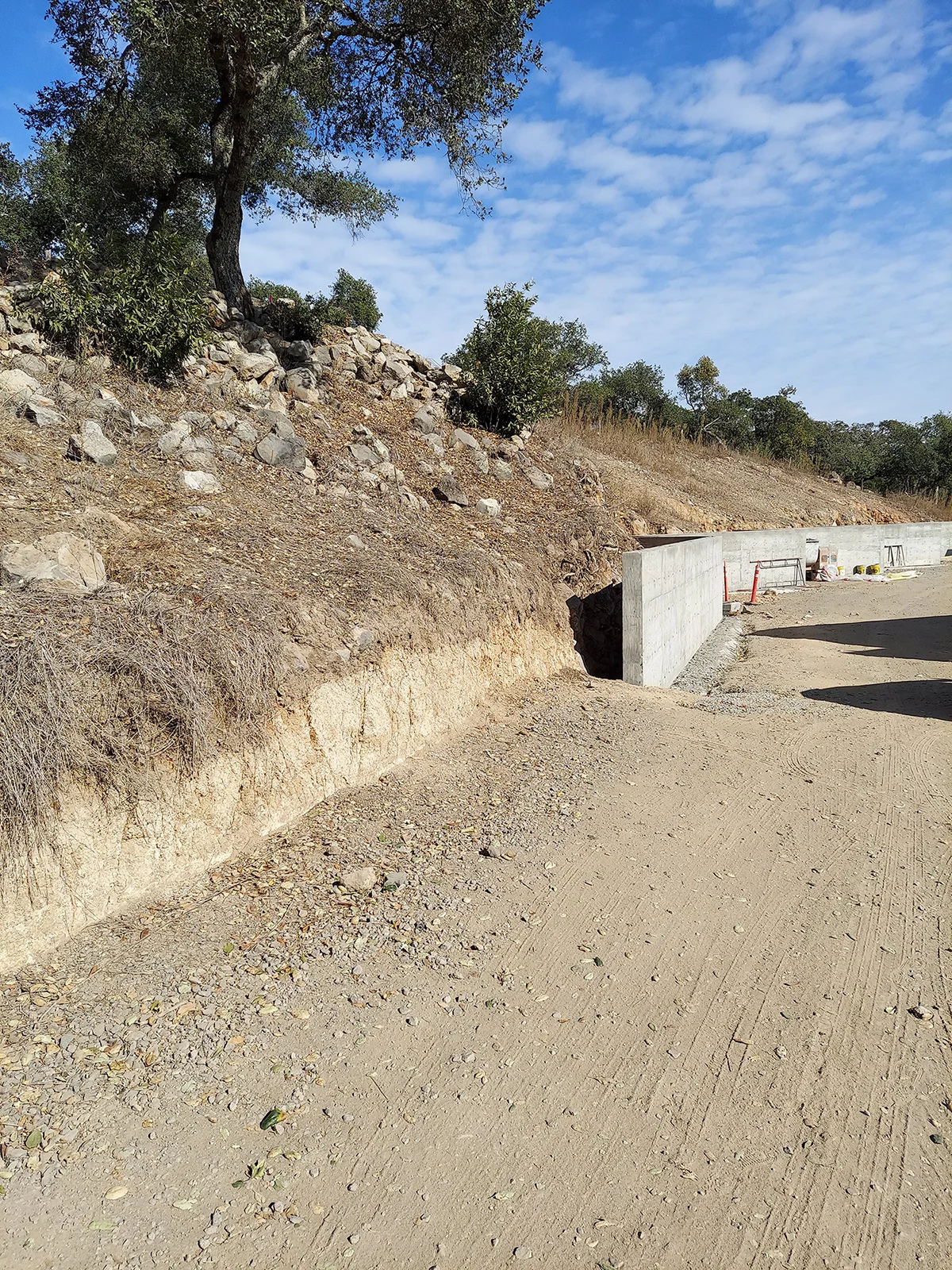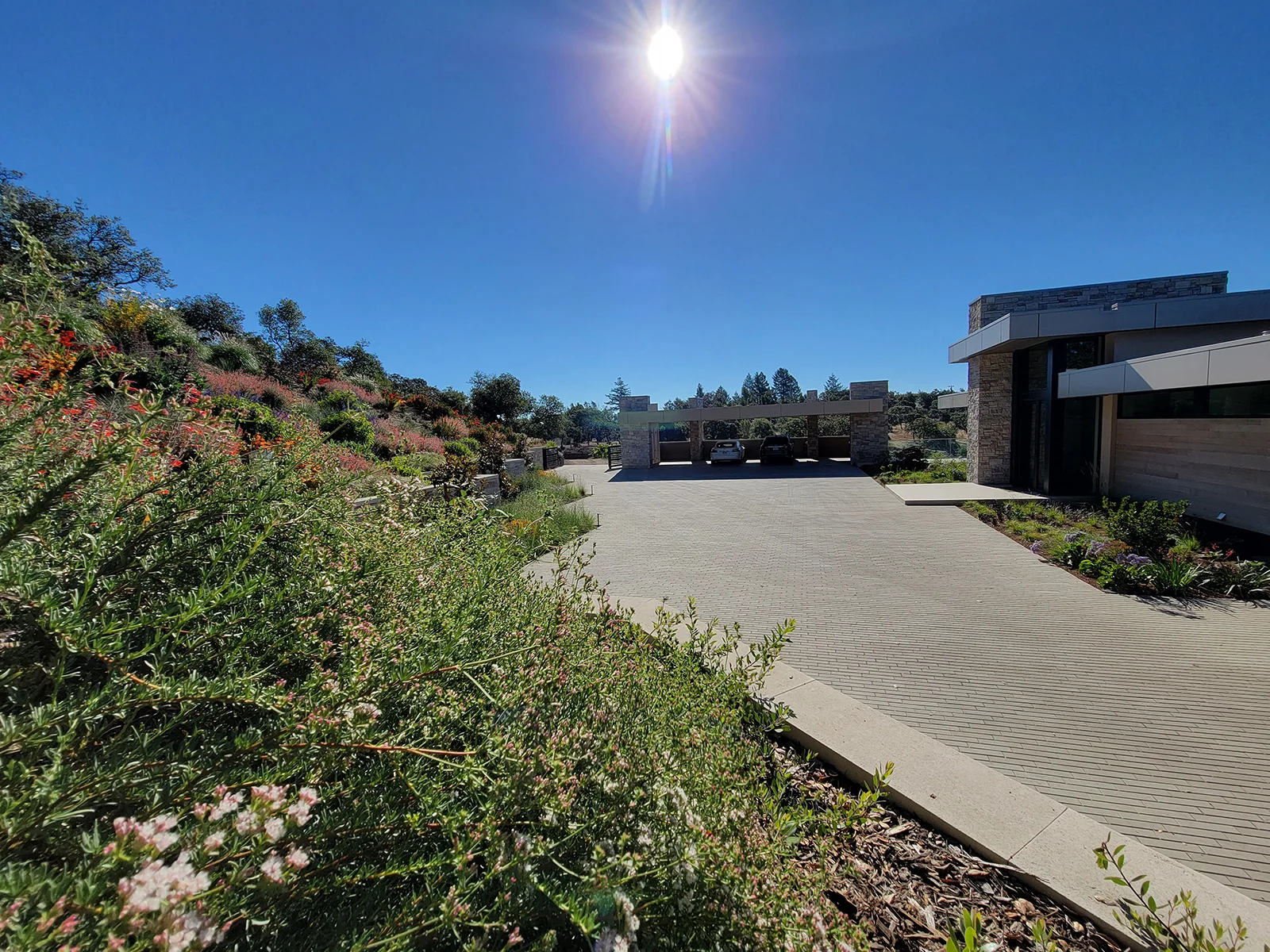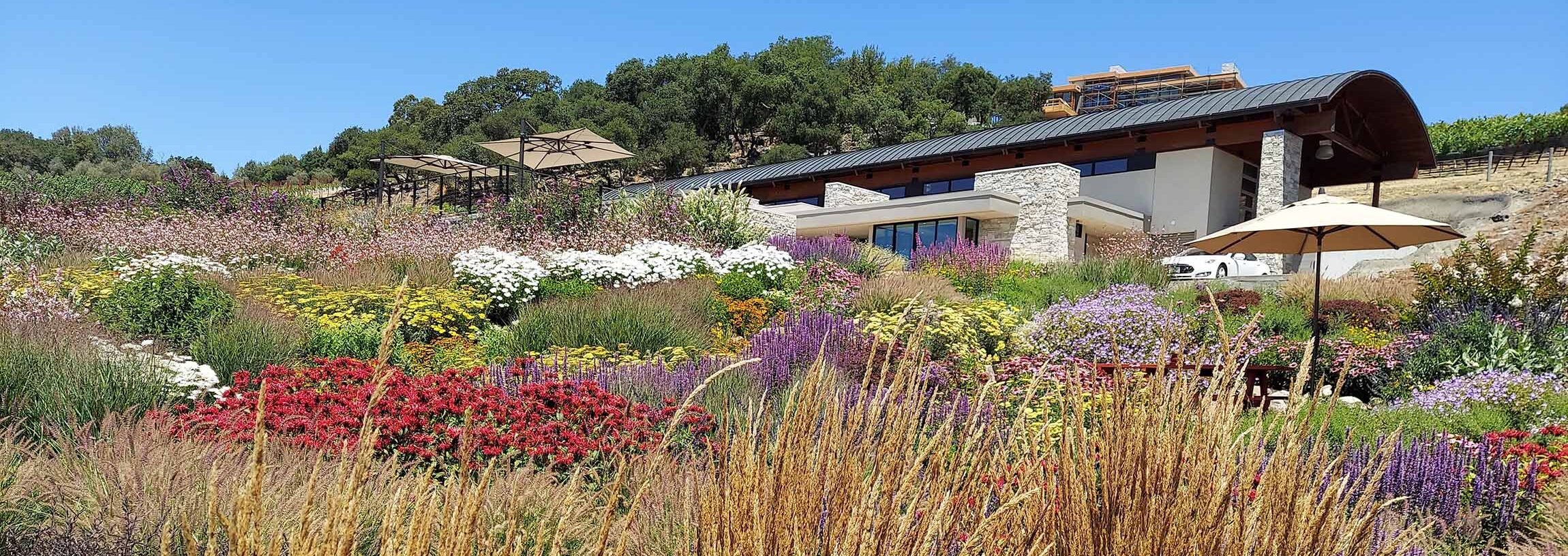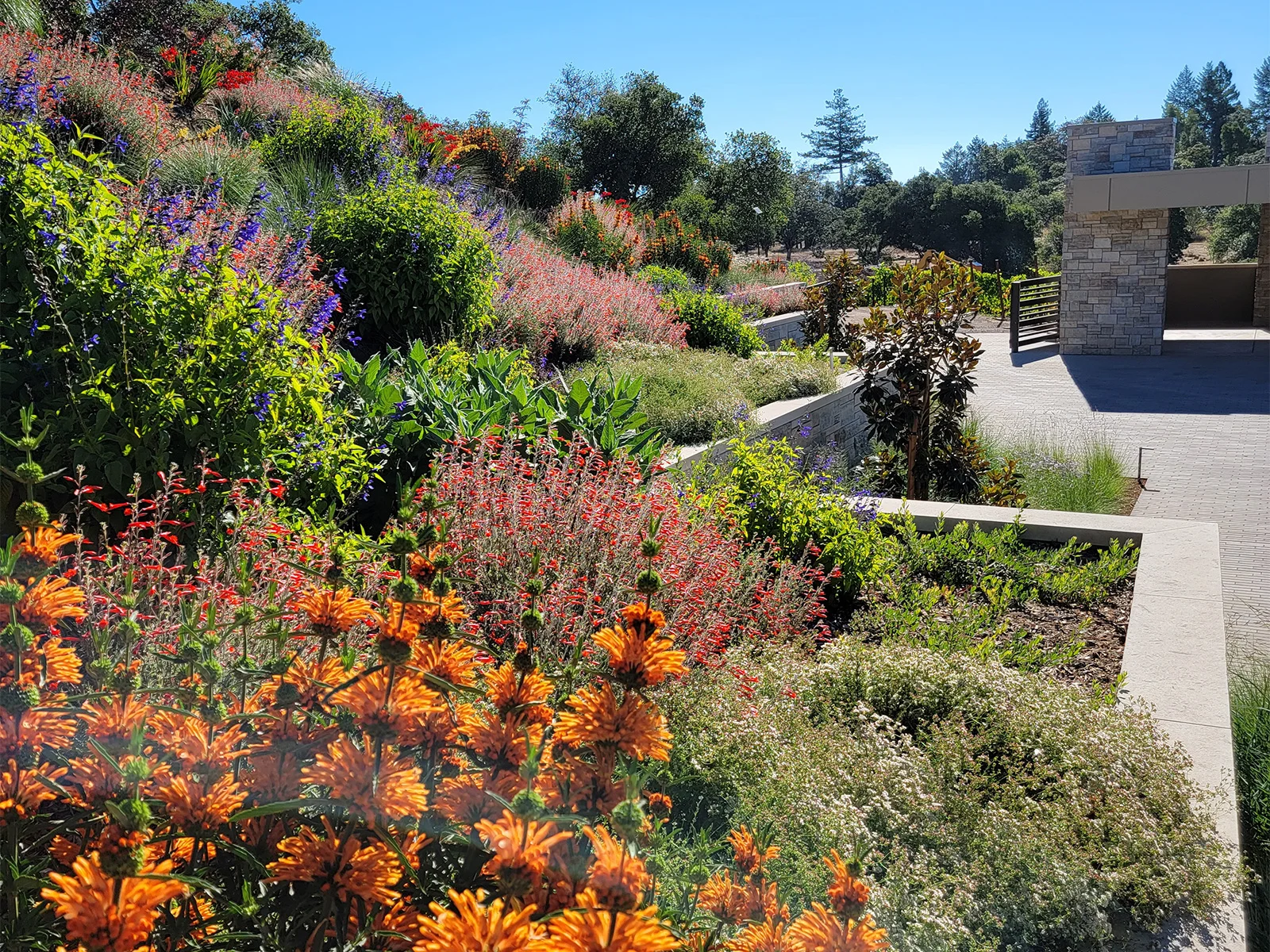
Notes from designer and Landscape Manager – Matt Ripley
This spectacular new residence is perched in the eastern hills of Santa Rosa and the property was decimated during the 2017 Tubbs Fire. Renowned architect, Charles R. Stinson, was drafted to design the new residence in his signature contemporary style which emphasizes the harmony between structure and nature. I was absolutely thrilled by the opportunity to work with him again as a landscape designer in Sonoma County, as he also designed the buildings around Coursey Graves Winery where I designed the award winning landscapes two years prior.
Charles’ design utilized bold lines of stone, steel, and wood that took form in varying widths, density, and texture as well as being highly directional in a vertical and horizontal manner. Part of what made our last collaboration between structure and landscape so successful was the juxtaposition of naturalistic plantings with these striking linear forms so I knew I wanted to play with that theme again but also wanted to take from the architecture more directly in the plantings directly adjacent to the front entry. With overlapping rows of Carex tumulicola, Sesleria autumnalis, and Ophiopogon nigrescens, I borrowed from the color contrasts of light, dark, and warm from the structure and mirrored shapes of the facade down into the planting beds as if they were a reflecting pool. To avoid having the beds feel stark by comparison to the surrounding planting areas which were to be full of color, I added highlights of Limomium perezii (Sea Lavender), Hosta (Giant Blue), Acer dissectum (Weeping Japanese Maple), Anigozanthos (Kangaroo Paw) and and a handful of other accents to catch one’s eye between the linear forms.
Across an expansive paver driveway you are led to a 6’ stone faced wall, where I began to transition from a more structured format into a meadowscape. I had recently returned from a particularly inspiring 5 day hike through the Eastern Sierra and came across a captivating meadow with grasses swaying in the foreground and native Asters, Rudbeckia, and Helenium dotted throughout. Using this as the basis for the foreground, I added the brilliantly blue and red Schizachyrium scoparium in the background with client-requested Magnolia ‘Little Gem’ as anchor trees in each bay of the folding walls.
Above the auto court sat an imposingly steep rocky hillside, something we’ve become used to finding as a Sonoma County landscape company, but this one was unique. It was simply not possible to put a shovel into the ground in any place without hitting a large boulder which combined with its steep grade made traditional approaches to soil preparation impossible. Even with a massive back hoe we would be boulders the size of a small car and destabilizing the slope. Instead we opted to use Geo-cell erosion control netting which allowed us to build an entirely new soil profile on top of the existing slope without running the risk of a landslide. We managed to build an approx. 18’’ soil profile and jack hammered into the rocky soil in places where we needed space for larger plants to develop deep root zones. While being a rather extensive process, it laid the foundation for our ability to plant a wide variety of interesting species. Lastly as landscape irrigation specialists in Sonoma County, we took a plant type and location specific approach to installation of state of the art irrigation components combined with weather-based irrigation controllers and programming that would ensure water remained in the root zones of the plants rather than running down the hillside.
Stated goals of our clients included very low maintenance, high degree of drought tolerance, while also providing habitat for pollinators along with as much color as possible. With these terms and conditions I used my experience as a landscape designer in Sonoma County to lean heavily towards a native palette but also included many desert species both for architectural interest, and for their incredible resilience in tough growing conditions. Dasylirion (Desert Spoon), Agave ovatifolia (Whales Tongue Agave), Aloe arboresens (Tree Aloe), and Hesperaloe (Red Yucca) were all featured heavily throughout the landscape. Natives included Romneya coulterii (Matija Poppy), Epilobium canum (CA Fucsia), Eriogonum fascicularis (CA Buckwheat), Muhlenbergia (Deer Grass), Arctostaphylos (Manzanita), Sambucus (Elderberry), and Salvia sonomensis (Creeping Sage). Other highlights are provided by Lenonrus, Crocosmia, Giant Miscanthus, Echium, Bottlebrush, Leucospermum and a variety of Salvia.
Lastly we were tasked with creating a combined entryway planting area to include an Orchard. As this was the first view upon arriving at the residence I took a small bit of each element and carefully combined them for a relaxed, yet defined space. Borrowing from the residence architecture I used raised steel planters to accent the fruit trees, trinity gravel which matched the colors of stone used on the hours stretched from end to end of the planting area and doubling as pathways through the space which terminate in a mortar set stone wall at the foot of the adjacent Oak grove. Sonoma fieldstone boulders dot the planting zone which include touches of Salvia, Echinacea, Rudbeckia, and native Bouteloua. Anigozanthos, Pieris, and Calamagrostis, all of which were showcased at the front entry of the residence, were repeated in this area to breed repetition in the planting patelle providing a sense of continuity through the spaces.
Existing site conditions of this project were by far the most challenging we had yet undertaken, many areas at first appeared un-suitable for a landscape and many folks shook their heads in disbelief when we told them what we planned to plant and where. However three months after our Sonoma County landscape installation, our weekly landscape maintenance services team oversaw that the landscape burst forth with vibrance life, hummingbirds, and butterflies zipping about and blooms cascaded down the slope previously thought to be entirely infertile. We planted this project in March and May of 2022 and these photos were taken in early August, and the resounding success was a result of intensive site-specific planting, imaginative irrigation and soil preparation, and a wonderful collaboration between ourselves and the owners allowing us a proud moment as Sonoma County landscape contractors.
See Below for Before and After Photos!
